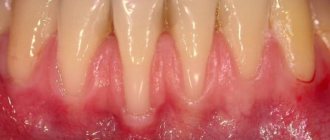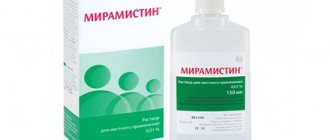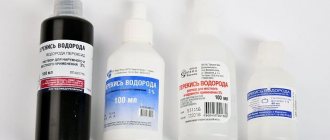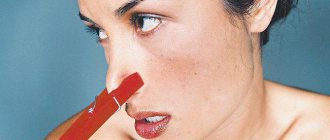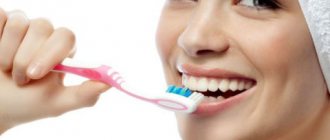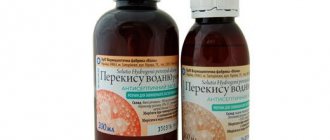Most people face the problem of bad breath. For some, the problem resolves on its own, for others, after resuming regular teeth brushing. But if the source of bad breath lies in a disease or disorder of the oral microflora, brushing your teeth does not always give the desired effect. One way to solve the problem is to use hydrogen peroxide. The features of using this tool are described in this article.
Hydrogen peroxide: application
note
- Bad breath before menstruation: causes, treatment
- How to get rid of bad breath?
- Remedy for bad breath CB12: description,…
- Bleeding gums and bad breath: causes and treatment
- Bad breath when sneezing: causes, treatment
- Trichopolum for bad breath: indications, instructions for...
The popularity of using hydrogen peroxide lies in the low cost, availability and effectiveness of this product. But it should be used carefully. If used incorrectly, hydrogen peroxide can cause serious damage to the mouth, gums, and overall health.
But how does this drug solve the problem of bad breath? The reason is the bactericidal effect of hydrogen peroxide. When the molecules of the product enter into a chemical reaction with the pathogenic bacteria that caused the problem, they oxidize their cell walls. As a result, the life activity of microorganisms slows down and as a result they die.
Will it help with bad breath?
It is worth considering that the use of hydrogen peroxide gives only a temporary effect. Within a few hours after rinsing, the activity of the oral microflora is restored, and after some time, bad breath returns. Therefore, to maintain the effect, you need to use hydrogen peroxide regularly. But if the problem lasts more than 5-7 days, it is better to consult a doctor. Long-term use of hydrogen peroxide is harmful to health.
You should not rinse your mouth or take hydrogen peroxide at a concentration higher than 3% orally!
If you use hydrogen peroxide solution as a mouthwash, it will have the following effects:
- Antiseptic. In dentistry, doctors prescribe peroxide to heal gums and mucous membranes. But too high a concentration will harm the gums and oral mucosa.
- It disinfects wounds well.
- Whitens. Use peroxide to clean any stains on your teeth. The solution is capable of oxidizing foreign substances that accumulate on the enamel. Included in many whitening products.
- Dries it out.
We suggest you read: What to do if the corners of your lips are cracked
Interacting with the damaged surface being treated, it foams. A chemical process starts, the peroxide breaks down, and oxygen is released. The blood clots quickly. This property promotes softening and exfoliation of dead areas, suppuration, and blood clots.
Without systemic care, infection of the gums and soft tissues in the oral cavity occurs. Bacteria in the mouth cause caries, periodontal disease, and provoke the formation of gumboil. The solution creates conditions on the skin that are unfavorable for the development of infection. Hydrogen peroxide is an excellent means for disinfection, wound treatment, teeth whitening and additional oral hygiene.
How to rinse your mouth with hydrogen peroxide if you have bad breath?
Now let’s talk about how hydrogen peroxide is used to combat bad breath. Pharmacies sell a 3% solution, which is unacceptable for use as it will burn the mucous membrane of the mouth.
The recipe for preparing the working solution is simple - 15 drops of pharmaceutical solution are dissolved in 100 milliliters of water (half a glass).
The method of application is also not complicated. You need to take the solution into your mouth and rinse your mouth for 1-2 minutes. Each time you need to prepare a new solution. If the aftertaste from the procedure causes discomfort, you can get rid of it (and consolidate the positive effect) by rinsing your mouth with a decoction of mint, sage or chamomile.
The procedures are repeated for 4-5 days, depending on the severity of the case. For periodontitis or stomatitis, the entire course of “treatment” can take up to 5-7 days. For aphthous stomatitis, it is recommended to replace rinsing with cotton pads soaked in the working solution. These discs are applied to the inflamed areas of the oral mucosa for 1 minute several times a day.
Another method of preparing a working solution for rinsing is when one peroxide tablet is added to a glass of heated boiled water.
It is important to consider that rinsing should not be repeated more than 5 times a day, and their duration should not exceed 3-5 minutes, otherwise the oral mucosa may be damaged.
The healing properties of hydrogen peroxide. recipes for treating feet.
Hydrogen peroxide will make your feet pink and smooth!
Hydrogen peroxide will make your feet pink and smooth!
Surely everyone knows that hydrogen peroxide is an excellent remedy for lightening hair and treating wounds. I will tell you in more detail what this substance is, what its medicinal properties are, how hydrogen peroxide is used for feet. Magic formula
The transparent liquid is colorless and odorless and differs from water in the presence of an extra oxygen atom (the formula of hydrogen peroxide is H2 O2). By transporting atomic oxygen to cells and tissues, its molecules affect metabolism. Hydrogen peroxide has a comprehensive effect on organs, regulating processes occurring in the cardiovascular, nervous, endocrine, and immune systems.
Hydrogen peroxide for feet. What diseases can she cope with? I will give recipes from various sources, tested in practice and received positive reviews.
We invite you to familiarize yourself with the Galatea flower: how to care for it
Let's look at the main problems that concern patients.
Numbness of the limbs. Soak a napkin with a 3% solution and rub it into areas that have lost sensitivity or are freezing. Normal blood circulation is gradually restored, the surfaces of the legs are cleaned.
Fungus on the feet. First option:
moisten cotton wool in a solution of H2 O2, apply it to previously steamed affected nails in the morning and evening. If you regularly repeat the procedure for 3–4 days, the nail plate will soften and turn white, making it easier to cut the nail and treat it with antifungal agents.
Second option. Dilute a pharmaceutical solution of hydrogen peroxide in a bowl of water in a 1:1 ratio, periodically dip your feet in it. After 15 minutes, the nails will become loose, and anti-fungal medications will better penetrate the tissue.
Trophic ulcers. Rub 3% hydrogen peroxide for heels into the affected areas every night until the skin is clear of ulcers.
Diabetic foot. Mix 0.5 liters of H2O2 solution, 3 liters of non-chlorinated water, heat to 28 - 32 o and make foot baths for 0.5 hours before going to bed. As a result, the vessels of the lower extremities are toned and blood circulation improves.
Hydrogen peroxide for feet in cosmetology
To remove corns and heal cracks on your feet, try this recipe: take a small bowl, pour one and a half liters of water into it (temperature 37 - 38 O). Add 4 tbsp. spoons of peroxide, lower your feet into the basin - and within a few minutes the soles will steam. Remove the loosened layer with a pumice stone and apply a mixture of glycerin and a small amount of vinegar to the softened skin. A foot bath with hydrogen peroxide for your heels should be done just once a week - and your feet will be pink and smooth.
After treating your feet in this way, your soles and heels become smooth and soft, and calluses disappear! If the soles are very neglected, you need to repeat the procedure several times. There will be nothing but benefit!

